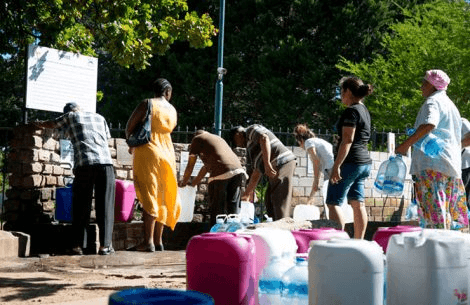A Tale of Two Urban Systems

Finance and equity within urban infrastructures—is this an irreparable tension or a constructive partnership?
How do we refine our urban systems and models? How do we mobilize data in meaningful ways?
This month, we focus our discussion around a recent CityLab article focusing on an innovative approach towards resolving the complex issue of homelessness in localities; and a 2020 article from the International Journal of Urban and Regional Research underscoring the inequities and infrastructural politics brought to a bubbling point via the Cape Town water crisis of 2015-2018.
In the first piece, “To Tackle Homelessness, Santa Fe Found a Better Plan” authored by Kriston Capps, the subject is the Built for Zero model—the “zero” referring to the functional zero standard achieved when a locality’s homeless count falls below the number of homeless persons it can routinely house. Historically of course, homelessness has been an extremely difficult and complex issue for cities to address, particularly in the United States. To paraphrase Alan Webber, the mayor of Santa Fe, tremendous amounts of money have been used “not solving the problem.” That fourteen communities have been able to achieve “functional zero” under this new approach therefore, is noteworthy.

Three key questions arise from these pieces.
First, urban infrastructures are often tasked with the provision of basic urban rights. In the case of Cape Town, it is the right to water, specifically free basic water that is being discussed. Can an urban infrastructure, which provides basic urban rights also be charged with achieving financial solvency? Or, is this a contradiction that cannot be negotiated without compromising one aim over the other?
To shed light on this, let us jump to the second question. How do we refine our urban systems? Millington and Scheba tap into another critical concept here—the notion of momentum. Our urban systems are molded around certain sets of practices and models. These sets and standards nudge our urban systems on certain trajectories, and as our systems tumble along, gathering more complexity, more layers, the more difficult it becomes to break from these initial trajectories. We call this path dependence.
How we typically refine systems, is that we trim and prune some of the newest growths, keeping negative impacts at bay, and supporting positive development. The dilemma is that far deeper into the system, there may be biases, inequities, vulnerabilities in existence. And these may swell as the system continues on its path. To get to these, trimming and pruning new growth is not an adequate approach. What Millington and Scheba point to, is not that the complexities of finance, equity, and climate change cannot be negotiated, but that a fundamental restructuring must be undertaken to do so—one which reshapes the baseline practices and models that are at the heart of Cape Town’s distribution of water, and the financial model around it.
Although we must see how the approach performs in the long term, it is this type of fundamental restructuring, that the Built for Zero framework may have set in motion in the United States.
And so, we arrive at the third question. How do we collect, mobilize, and share data to achieve meaningful results in our cities? Within the Built for Zero model, the reformulation of the data stream appears to be critical. Information is obtained real-time and continuously maintained; datasets contain high-quality and personalized data points, specific to each homeless person of a locality; and data is shared completely across the varying agencies, organizations, shelters, social workers, and clinics engaged with this issue.
As a whole, this appears to be a quantitative approach that has been modeled to directly address the issues of stagnancy, impersonality, and fragmentation which characterize the conventional data model often used for shaping the provision of homeless services within the United States. Equipped with this new and continuous network of information, localities are able to set in motion much more specific and strategic approaches to the issue at hand. And as far as can be observed for the time being, a noteworthy degree of success is being reported.
With these two pieces, we are perhaps offered a glimpse into two different points in time in an urban system’s developmental path. In the case of the United States, a branch of the social service infrastructure appears to be undergoing a much-needed fundamental reformulation. In the case of Cape Town, perhaps the trigger for this reformulation is simply being set.
Urban systems, tensions, refinements, and data. These are the keywords for this month.
By Cem Kayatekin, Assistant Professor at IE School of Architecture and Design and Ph.D, Architecture